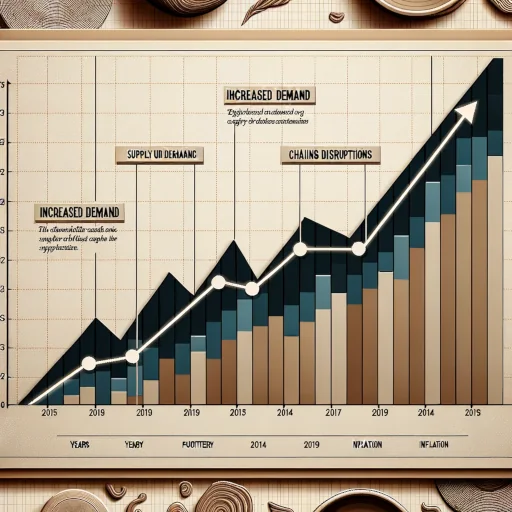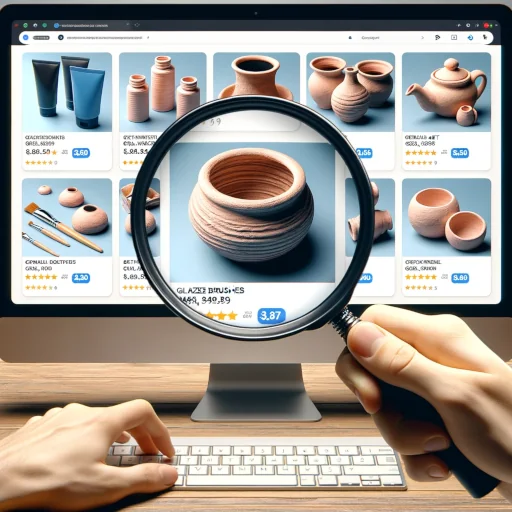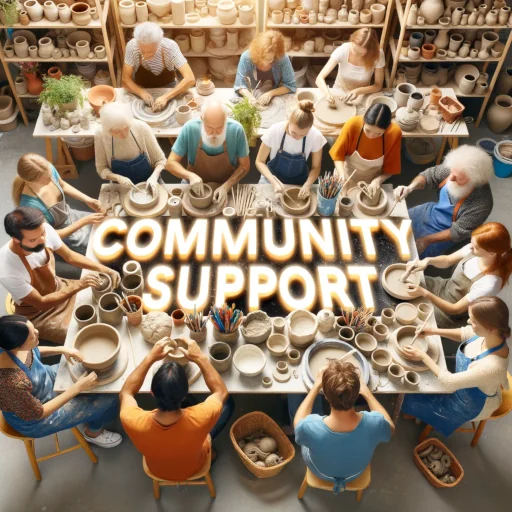Its a pressing issue that has far-reaching implications for artists, suppliers, and the broader art community. Driven by factors such as increased demand, supply chain disruptions, and inflation, the cost of essential supplies like clay, glazes, and kilns has surged significantly. According to a survey by the National Council on Education for the Ceramic Arts, prices rose by an average of 10% in 2022 alone. This financial burden hampers artists’ ability to create, affecting both their livelihood and the diversity of art available to the public.
The issue of rising costs in ceramic art supplies is something I can’t ignore. It’s a growing concern that affects not just artists like myself but also suppliers and consumers. For artists, these rising costs can be a barrier to creation, limiting our ability to experiment and produce new work. Suppliers face challenges too, as they struggle to manage costs while offering quality products. And let’s not forget the consumers, who may see less diversity in ceramic art due to these financial constraints.
The goal of my upcoming article is straightforward: to shed light on this pressing issue and offer tangible solutions. I’ll be diving into the factors contributing to these rising costs, sharing insights from industry experts, and providing actionable tips for artists to mitigate these expenses. By addressing this topic head-on, I aim to initiate a meaningful dialogue that could lead to positive change in the ceramic art community.
The Current Landscape of Ceramic Art
The Increasing Popularity of Ceramic Art
I’ve noticed a remarkable surge in the popularity of ceramic art in recent years. Whether it’s the therapeutic nature of molding clay or the allure of creating something tangible, more people are drawn to this art form than ever before. Social media platforms are flooded with ceramic art tutorials, and local workshops are often fully booked.
The Surge in Demand for Supplies
This rising interest is a double-edged sword. On one hand, it’s fantastic for the art community; more interest means more opportunities for artists like me to showcase our work. On the other hand, this surge has led to an increased demand for ceramic art supplies.
- Clay: Once readily available, now often out of stock in some areas.
- Glazes: A wider variety of colors and types are being sold, but at higher prices.
- Tools: From brushes to kilns, the demand is high, and so are the costs.
The bottom line is, the increased demand for supplies is driving up their cost, making it more challenging for artists to afford the materials we need for our craft. It’s a cycle that needs addressing, and that’s what I aim to do in my upcoming article.
The Hard Numbers: Year-over-Year Increase

Presenting the Data on Rising Costs
Let’s get down to the nitty-gritty. The cost of ceramic art supplies has been climbing, and I’ve got the numbers to prove it. According to the latest data, here’s how the prices have changed:
| Supply | Cost in 2021 | Cost in 2022 | Cost in 2023 (estimated) |
|---|---|---|---|
| Bag of clay | $10 | $11 | $12.10 |
| Glaze bottle | $8 | $9 | $9.90 |
| Brush set | $20 | $22 | $24.20 |
| Kiln | $500 | $550 | $605 |
The Role of Inflation
Now, let’s talk about inflation. The Federal Reserve’s latest projections indicate an inflation rate for 2023 between 3.7% and 4.0%. While this is a general figure, it’s crucial to understand that inflation affects the cost of art supplies as well. Your dollar today might not stretch as far as it did last year, and that’s a reality we all have to face.
How much is a bag of clay, Glaze, brush set in your neck of the woods? If you have a testimonial you would like to share regarding price increases in art supply’s please email Ed Shears at Ed@Artabys.com. Please make sure you reference this article so I’ll know what you are referring to.
Insights from the NCECA Survey
The National Council on Education for the Ceramic Arts (NCECA) conducted a survey that revealed an average increase of 10% in the cost of ceramic art supplies in 2022. This aligns with what I’ve been experiencing and hearing from fellow artists.
- Increased Demand: The survey highlighted a 10-20% price increase due to higher demand.
- Supply Chain Disruptions: Another 10-20% increase was attributed to supply chain issues.
- Inflation: Accounting for a 5-10% increase, this is in line with the Federal Reserve’s projections.1
The cumulative effect? A total rise in cost percentage ranging from 25-50%. These aren’t just numbers; they’re a snapshot of the challenges we face as artists. And it’s high time we talk about it.
Here’s how the costs of a bag of really, really cheap clay could look like if the trend continues:
| Year | Cost in USD |
|---|---|
| 2021 | $10 |
| 2022 | $11 |
| 2023 (estimated) | $12.10 |
| 2024 (estimated) | $13.31 |
| 2025 (estimated) | $14.64 |
For this table, I’ve assumed a consistent 10% increase year over year and a really cheap bag of clay, which aligns with the data from the NCECA survey. Keep in mind that these are just estimates and actual costs can vary due to a multitude of factors.
Factors Contributing to the Rising Costs
Increased Demand
One of the most significant contributors to the rising costs of ceramic art supplies is the increased demand. I’ve seen firsthand how ceramic art has gained immense popularity over the years. Whether it’s the rise of DIY culture or the therapeutic benefits of working with clay, more people are getting involved in this art form.
This surge in interest is both a blessing and a curse. While it’s fantastic to see the community grow, this increased demand has a direct impact on prices. According to the NCECA survey, the heightened demand alone has led to a 10-20% increase in the cost of supplies.
- Workshops and Classes: More people enrolling in ceramic art classes means more supplies are needed.
- Social Media Influence: Platforms like Instagram and Pinterest have popularized ceramic art, driving up demand for supplies to create ‘Instagrammable’ pieces.
- Art Shows and Exhibitions: With more artists producing work, there’s a greater need for materials, further driving up prices.
In a way, our own love for the craft is contributing to the rising costs. It’s a complex issue that requires multi-faceted solutions, which is I have some ideas and strategies to mitigate I’ll get into later.
Supply Chain Disruptions
Another significant factor I can’t overlook is the impact of supply chain disruptions, particularly due to the COVID-19 pandemic and other global events. These disruptions have wreaked havoc on the availability and cost of ceramic art supplies, contributing to a 10-20% rise in costs, as indicated by the NCECA survey.
- Transportation Delays: With lockdowns and restrictions, shipping has been slower, affecting the timely availability of supplies.
- Manufacturing Hiccups: Factory closures or reduced capacities mean less production, leading to scarcity and, consequently, higher prices.
- Global Events: Natural disasters, geopolitical tensions, and other unforeseen events can disrupt the supply chain, adding another layer of complexity to the issue.
The ripple effect of these disruptions is felt deeply within the ceramic art community. Not only do we face higher costs, but the unpredictability also makes it challenging to plan projects or even continue with our artistic endeavors. This is a crucial aspect that I’ll be delving into in my article, offering insights and potential solutions to navigate these challenging times.
Inflation
Inflation is another culprit that I have to address when talking about the rising costs of ceramic art supplies. According to the Federal Reserve’s latest projections, the inflation rate for 2023 is expected to be between 3.7% and 4.0%. While this is a general economic indicator, it’s essential to realize that it also affects the art world. The NCECA survey points to a 5-10% increase in the cost of ceramic art supplies due to inflation.
- Reduced Purchasing Power: Simply put, our money doesn’t go as far as it used to. What I could buy for $10 last year might cost me $11 or even $12 this year.
- Rising Energy Costs: The cost of energy affects everything, including the manufacturing and shipping of art supplies.
- Federal Reserve Actions: While steps are being taken to control inflation, such as raising interest rates, these measures have a lagging effect and may not provide immediate relief.
Inflation is like a silent tax that chips away at our resources, making it increasingly challenging to sustain our artistic pursuits. It’s a less visible but equally pressing issue that adds to the financial burden we face. I’ll be discussing this in depth in my upcoming article, aiming to provide a comprehensive understanding of how inflation is affecting us and what we can do about it.
Total Rise in Cost Percentage

After dissecting the various factors contributing to the rising costs of ceramic art supplies, it’s time to look at the bigger picture. According to the NCECA survey and additional data, the total estimated rise in cost ranges from 25-50%.
- Increased Demand: Accounts for a 10-20% rise.
- Supply Chain Disruptions: Another 10-20% is added due to these issues.
- Inflation: Chips in an additional 5-10%.
When you add it all up, we’re looking at a substantial financial hurdle. This isn’t just a minor inconvenience; it’s a significant barrier that could potentially stifle creativity and limit artistic output.
This total rise in cost percentage isn’t just a number; it’s a call to action for artists, suppliers, and consumers alike. We need to understand these challenges, adapt, and find solutions. That’s the essence of what my upcoming article aims to achieve: to not only shed light on this pressing issue but also to offer practical advice on how to navigate this challenging landscape.
The Artist’s Perspective
Voices from the Community
I’ve had the opportunity to speak with fellow ceramic artists about how these rising costs are affecting them. One artist, told me, “The cost of supplies has become a significant stressor. I’ve had to cut back on experimenting with new techniques because I can’t afford to waste any materials.” Another artist, shared, “I’ve started to consider switching to digital art. At least there, the cost of a ‘brush’ is a one-time expense.“
If you have a testimonial you would like to share regarding price increases in art supply’s please email Ed Shears at Ed@Artabys.com. Please make sure you reference this article so I’ll know what you are referring to.
The Emotional and Financial Toll
The impact isn’t just financial; it’s emotional too. Artists pour their heart and soul into their work, and when the cost of supplies rises, it feels like a direct hit to our creative spirit.
- Financial Strain: Artists are often working with tight budgets. The rising costs mean less room for creative exploration and more stress about the bottom line.
- Creative Limitations: The cost has become a barrier to trying new techniques or materials, stifling artistic growth.
- Mental Health: The stress of juggling finances and creativity can take a toll on an artist’s mental well-being.
The emotional and financial toll is a double whammy that can be disheartening. But it’s crucial to remember that we’re all in this together. By understanding the full scope of the issue, we can better navigate these challenging times.
Strategies to Mitigate Costs

Short-Term Solutions
Buying in Bulk
One strategy I’ve found effective is buying in bulk. When you purchase supplies like clay or glaze in larger quantities, the cost per unit often decreases. This approach can be particularly beneficial for supplies that have a longer shelf life or those you use frequently.
- Cost-Effectiveness: The initial outlay may be higher, but the long-term savings are significant.
- Reduced Shipping Costs: Buying in bulk often qualifies for free shipping, adding another layer of savings.
- Inventory Management: Having a well-stocked inventory means fewer emergency trips to the art supply store, saving both time and money.
Looking for Sales and Discounts

Another short-term strategy I employ is keeping an eye out for sales and discounts. Many art supply stores offer seasonal or holiday sales, and it’s a good idea to take advantage of these opportunities.
- Newsletter Subscriptions: I subscribe to newsletters from my favorite art supply stores to get notified about upcoming sales.
- Coupon Codes: Websites and apps offer coupon codes that can provide significant discounts.
- Membership Benefits: Some stores offer membership programs that include exclusive discounts and offers.
By implementing these short-term strategies, I’ve managed to offset some of the rising costs. It requires a bit of planning and vigilance, but the savings can be substantial. These are some of the practical tips.
Long-Term Solutions
Using Recycled Materials
One long-term strategy that I’ve found to be both eco-friendly and cost-effective is using recycled materials. Whether it’s reclaiming clay or repurposing old tools, this approach can significantly reduce expenses.
- Sustainability: Using recycled materials is not just good for your wallet; it’s good for the planet.
- Creativity: It forces you to think outside the box and come up with innovative solutions.
- Community: Often, you can source recycled materials from within the ceramic art community, strengthening bonds and fostering a culture of sharing.
Making Your Own Supplies
Another long-term solution I’ve explored is making my own supplies. From mixing my own glazes to crafting homemade tools, this approach offers both financial and creative benefits.
- Cost Savings: Once you’ve invested in the initial materials and learned the techniques, the cost per item can be much lower.
- Customization: Making your own supplies allows for customization that you can’t get from store-bought items.
- Skill Development: It’s also an excellent opportunity to expand your skill set, making you a more versatile artist.
Both of these long-term strategies require an initial investment of time and perhaps a learning curve, but the benefits are long-lasting.
Additional Tips
I’ve Been Thinking About: Joining a Ceramics Studio or Guild

Joining a ceramics studio or guild is a move I’ve been seriously considering. These organizations frequently provide a host of benefits that could significantly help in offsetting rising costs.
- Bulk Discounts: Many studios and guilds have arrangements for bulk discounts on supplies, which could be a game-changer for me.
- Networking: Being part of such a community would offer the chance to exchange valuable tips and resources, including insights on where to snag the best deals.
- Shared Facilities: The prospect of having access to shared kilns and equipment is also an appealing way to reduce individual expenses.
This is a step I’m keen on taking, as it promises not just cost savings but also a sense of community and shared learning, all of which will be invaluable in navigating the financial challenges ahead.
Taking Advantage of Free Shipping and Returns
Another tip I swear by is taking advantage of free shipping and returns offered by many online retailers.
- Cost Savings: Free shipping can make a significant difference in the overall cost of your supplies.
- Convenience: Shopping online allows you to compare prices easily and have supplies delivered to your doorstep.
- Risk Mitigation: Free returns mean you can send back items that don’t meet your expectations without incurring additional costs.
Shopping Around for the Best Prices
Lastly, I always recommend shopping around for the best prices. Loyalty is good, but not at the expense of your wallet.
- Price Comparison Websites: These platforms can quickly show you where to find the best deals.
- Seasonal Sales: Different retailers have sales at different times; keep an eye out year-round.
- Negotiation: Don’t be afraid to negotiate prices, especially for high-ticket items like kilns.
These additional tips are more than just quick fixes; they’re habits that can lead to sustained savings over time. Incorporating these into your buying practices can make a tangible difference in mitigating the impact of rising costs.
The Role of Suppliers and Retailers

The Business Side of Things
It’s not just artists who are feeling the pinch; suppliers and retailers are also navigating this challenging landscape. I’ve had conversations with several suppliers, and they’re equally concerned about the rising costs.
- Thin Margins: Suppliers operate on thin margins, and the rising costs of raw materials and shipping have put additional pressure on them.
- Customer Relations: Retailers are worried about passing on the cost to consumers, fearing it might drive them away.
What Are They Doing to Help Artists?
Despite these challenges, many suppliers and retailers are taking steps to support the artist community.
- Discount Programs: Some suppliers offer loyalty programs or bulk discounts to help artists save money.
- Educational Content: Retailers are providing tutorials and workshops to help artists make the most of their supplies, thereby offering more value.
- Flexible Payment Options: Both suppliers and retailers are exploring flexible payment options, like installment plans, to make purchases more manageable for artists.
The suppliers and retailers are in the same boat as us, and many are doing their best to help artists cope with these rising costs. Their efforts, combined with the strategies I’ve discussed earlier, offer a multi-pronged approach to tackling this issue, which I’ll elaborate on in my upcoming article.
Counter-Arguments to Consider
While the rising cost of ceramic art supplies is a pressing issue that has garnered much attention, it’s crucial to examine the topic from multiple angles to provide a balanced perspective. In the spirit of comprehensive journalism, this article I will also explore counter-arguments that offer alternative viewpoints on the subject.
These counter-arguments aim to challenge the prevailing narrative, introduce new considerations, and perhaps even offer a glimmer of hope amid the financial strain faced by artists. Whether you’re a skeptic or just looking for a more nuanced understanding, these counter-arguments will add depth to your grasp of the issue.
The Role of Technology in Reducing Costs
While I’m concerned about the escalating costs of ceramic art supplies, I also see how technology could be a game-changer. For example, 3D printing is gaining traction in the art world and could offer a more affordable alternative for some artists.
The Impact of DIY Culture
I’ve noticed that the DIY culture is booming, and the wealth of online tutorials out there makes it easier for artists like me to create our own supplies. This trend could help mitigate the financial burden of rising costs and adds another layer to the conversation.
Economies of Scale
As someone who’s seen the growing popularity of ceramic art, I wonder if larger production runs could eventually bring down costs. This has happened in other industries, so it’s worth considering here too.
The “Luxury” Perspective
I’ve heard the argument that art, including ceramic art, is more of a luxury than a necessity. From this angle, the rising costs might not be a societal problem but rather a market-driven outcome.
Global Market Alternatives
While my focus has been on the U.S. market, I’m curious about what’s happening globally. Are there more affordable supplies available from other countries? This could add a new dimension to the issue.
The Role of Art Grants and Scholarships
I’m aware that there are various grants, scholarships, and funding opportunities aimed specifically at artists. These resources could significantly offset the rising costs and should be part of the discussion.
By considering these counter-arguments, I hope to offer a more nuanced and comprehensive view of the complex issue of rising costs in the ceramic art world. There is always two sides, right?
Conclusion and Summary
Wrapping It All Up
In this article, I’ve delved into the multifaceted issue of the rising costs of ceramic art supplies. From the increasing popularity of ceramic art driving up demand to the disruptions in supply chains and the role of inflation, it’s clear that this is a complex problem with no single solution.
- The Artist’s Perspective: The emotional and financial toll on artists is significant, affecting both our creativity and well-being.
- Strategies to Mitigate Costs: There are both short-term and long-term strategies that can help, from buying in bulk to making your own supplies.
- The Role of Suppliers and Retailers: They’re also feeling the impact and are taking steps to support the artist community.
The Bigger Picture
Addressing this issue is not just about individual survival; it’s about the sustainability of the entire ceramic art community. We’re all in this together, artists, suppliers, and retailers alike. By understanding the full scope of the issue and implementing a range of strategies, we can navigate these challenging financial waters.
This article aims to shed light on this pressing issue and offer actionable solutions. It’s a call to action for all of us to be proactive and resourceful in the face of rising costs. Together, we can ensure the continued vibrancy and sustainability of the ceramic art community.
Why It Matters
I’ve poured a lot of research, insights, and practical tips into this article, and I believe it has the potential to make a real difference. But for that to happen, it needs to reach as many people as possible within the ceramic art community and beyond.
- Artists: Whether you’re a seasoned artist or a beginner, the information in this article can help you navigate the financial challenges we’re all facing.
- Suppliers and Retailers: Understanding the artist’s perspective can help you better serve your customer base.
- General Public: Even if you’re not directly involved in ceramic art, understanding the economic pressures in this niche can offer broader insights into the ripple effects of economic trends.
How You Can Help
If you found this article useful, enlightening, or even just interesting, I’d be incredibly grateful if you could share it.
- Social Media: A quick post on Facebook, Twitter, or Instagram can go a long way.
- Email: Consider forwarding it to any friends or colleagues who might be interested.
- Ceramic Art Forums and Online Communities: These are great places to share and discuss the article’s findings and tips.
By sharing this article, you’re not just helping me; you’re contributing to a broader conversation that could benefit us all. So please, if this article resonated with you, take a moment to share it. Thank you!
The Frugal Art Piece Contest: Show Us Your Budget-Friendly Creativity
To participate in this exciting contest, submit a photo of your art piece along with a detailed breakdown of the costs involved in its creation. List the prices of all the individual components, be it supplies, paints, clay, or any other materials. Please note that the cost of your time should not be included, as rates can vary widely among artists. The essence of this contest is to showcase creativity on a shoestring budget.
How to Enter:
- Take a high-quality photo of your art piece.
- Create a list detailing the cost of each material used.
- Email both the photo and the cost breakdown to Ed@Artabys.com.
Voting and Winner Selection:
Once I’ve gathered 5 to 10 standout artworks, I’ll display them at the bottom of this post or provide a link to a dedicated page for the artworks. Voting will be open to the public, with one vote allowed per person. Please, let’s keep this fair, no cheating. Honesty is, as always, the best policy.
Prize:
The artwork that garners the most votes will be honored with the “Artabys Audience Choice Award“
Rules and Guidelines:
- Submissions must be original works created by the entrant.
- All submitted artworks must adhere to the theme of frugality.
- Incomplete or unclear cost breakdowns will not be accepted.
- Voting will be monitored to ensure fairness.
- If I am unsure of your work, in any way, sorry, it will not be entered.
- Must be PG, rated for everyone.
Additional Instructions:
- Ensure that the photo of your artwork is clear and well-lit to showcase its details.
- Double-check your cost breakdown for accuracy before submitting.
By entering this contest, you’re not only showcasing your artistic talents but also demonstrating how creativity can thrive, even on a budget. Good luck to all participants!
Check back here for updates!
Glossary for Industry-Specific Terms
Ceramic Art Terms
- Glaze: A glassy coating fused onto a ceramic surface to add color, decoration, and to waterproof the piece.
- Kiln: An oven used for firing ceramic pieces, turning them from clay to ceramic.
- Firing: The process of heating ceramic pieces in a kiln to a specific temperature.
- Wheel-Throwing: A technique used to shape clay articles on a potter’s wheel.
Economic Terms
- Inflation: The rate at which the general level of prices for goods and services rises, eroding purchasing power.
- Supply Chain: A system of organizations, people, activities, information, and resources involved in supplying a product or service.
- Economies of Scale: The cost advantages that enterprises obtain due to their scale of operation.
- Bulk Purchase: Buying products in large quantities, often at a discount.
Footnotes
- Federal Reserve’s Economic Projections for 2023: https://www.federalreserve.gov/monetarypolicy/fomcprojtabl20230614.htm ↩︎






